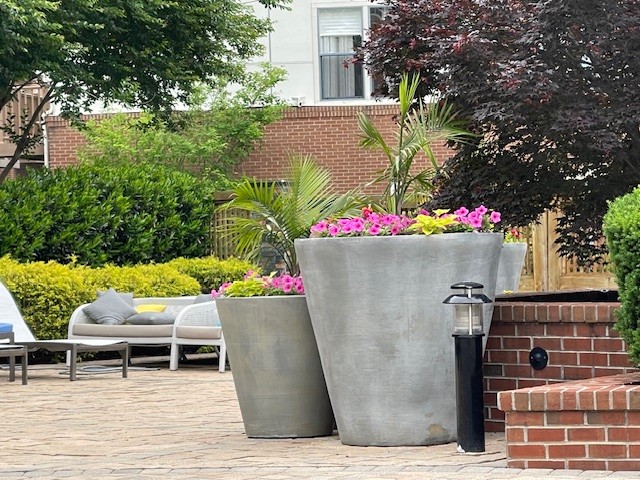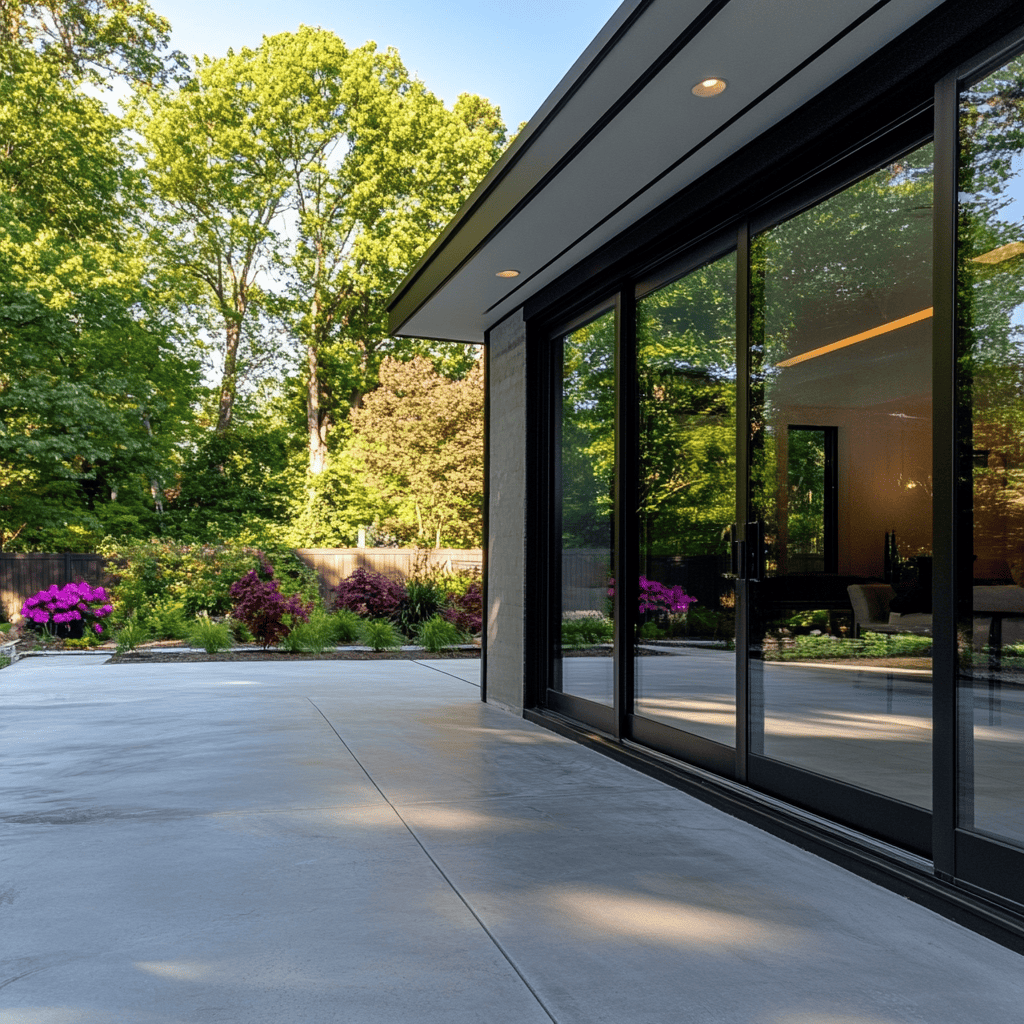WC Landscape specializes in creating stunning foundation planting designs that transform the exterior of your Centreville, VA home into a welcoming and visually appealing landscape. Our expert design team combines over 40 years of combined experience with deep knowledge of Northern Virginia's unique growing conditions to create foundation plantings that thrive year-round while complementing your home's architectural style. From selecting the perfect shrubs and perennials to designing seasonal color displays, we create custom foundation landscapes that enhance your property's curb appeal, increase home value, and provide lasting beauty for years to come.



Our foundation planting design process begins with a detailed assessment of your Centreville property's unique characteristics. We evaluate your home's architectural style, existing landscape features, soil conditions, sun exposure patterns, and drainage considerations to create a foundation design that perfectly complements your property.
Our comprehensive design services include:
Choosing the right plants for your foundation is crucial for long-term success and visual impact. Our horticultural experts select plants based on Centreville's specific growing conditions, including our clay soils, variable moisture levels, and transitional climate zone.
Our plant selection process considers:
A well-designed foundation planting provides visual interest throughout all four seasons. Our design team creates layered plantings that offer continuously changing beauty from spring emergence through winter dormancy.
With over 40 years of combined experience in Northern Virginia landscaping, our design team possesses deep knowledge of Centreville's unique growing conditions. We understand which plants thrive in our transitional climate zone, how to work with the challenging clay soils common throughout the area, and which varieties provide the best performance in both full sun and shaded foundation areas.
Our local expertise extends to understanding the architectural styles prevalent in Centreville neighborhoods, from the colonial and traditional homes in Virginia Run to the contemporary designs in newer developments like Centre Ridge. This knowledge allows us to create foundation designs that authentically complement your home's style while incorporating plants proven successful in our local environment.
Unlike basic landscaping services that simply install plants, WC Landscape approaches foundation planting design as a comprehensive process that considers every aspect of your property. Our systematic approach ensures your foundation plantings integrate seamlessly with your home's architecture, existing landscape features, and your personal preferences for maintenance and visual impact.
We coordinate our foundation designs with other landscape elements including walkways, driveways, patios, and existing mature trees. This holistic approach creates cohesive outdoor spaces that enhance your entire property rather than just the immediate foundation area.
WC Landscape sources high-quality plant materials from reputable nurseries, selecting specimens that meet our strict standards for health, form, and root development. We choose plants that are properly sized for immediate impact while allowing appropriate space for mature growth.
Our installation process includes:
Foundation plantings represent a significant investment in your Centreville property's beauty and value. WC Landscape provides ongoing maintenance services to protect this investment and ensure your plantings continue to thrive and provide the intended visual impact.
Our maintenance programs include seasonal pruning, fertilization, pest and disease monitoring, mulch replenishment, and plant replacement when necessary. This comprehensive care approach keeps your foundation plantings looking professionally maintained while adapting to changing conditions over time.
Centreville's heavy clay soils present unique challenges for foundation plantings, including poor drainage, compaction, and limited root penetration. Our design team addresses these challenges through:
We transform challenging clay soil conditions into thriving foundation gardens through proper plant selection and soil management techniques proven effective in Northern Virginia.
Many Centreville homes feature foundation areas with varying light conditions, from deep shade on north sides to intense sun exposure on south-facing walls. Our design team creates smooth transitions between these different microclimates:
Centreville's established neighborhoods often feature large mature trees that impact foundation planting design. We work with these existing assets to create designs that:
Different architectural styles require thoughtfully coordinated foundation plantings. Our design team specializes in creating appropriate plantings for:
We begin every foundation planting project with a comprehensive consultation at your Centreville property. During this visit, our design team:
This thorough initial assessment ensures our design recommendations align perfectly with your property's conditions and your personal preferences.
Based on our site analysis, we develop a detailed foundation planting design tailored specifically to your Centreville home. Our design process includes:
We present our design recommendations with detailed explanations of plant choices, care requirements, and expected performance in your specific location.
Our experienced installation crew implements your foundation design with attention to detail and proper horticultural practices:
Newly installed foundation plantings require specific care during their establishment period. WC Landscape provides:
We develop customized maintenance schedules that keep your foundation plantings looking their best throughout all seasons:
Successful foundation plantings create appropriate scale relationships between your home and landscape. Understanding these principles helps create designs that enhance rather than overwhelm your property's architecture.
Vertical Scaling: Foundation plantings should typically reach one-third to two-thirds of the height from ground to eaves at maturity. This proportion creates visual balance without blocking windows or overwhelming the home’s facade. For single-story homes, this typically means plants reaching 4-6 feet at maturity, while two-story homes can accommodate taller specimens up to 8-10 feet.
Horizontal Proportions: The depth of foundation planting beds should generally equal the height of the tallest plants, creating natural-looking transitions from architecture to landscape. Narrow beds with tall plants appear unbalanced, while overly deep beds can dwarf smaller homes.
Layered Design Approach: Professional foundation designs incorporate multiple height layers:
Understanding color relationships helps create foundation plantings that complement your home's exterior while providing visual interest throughout the seasons.
Complementary Color Schemes: Colors opposite each other on the color wheel create vibrant contrasts. For example, homes with warm brick tones benefit from cool blue and purple flowering plants, while homes with cool gray or blue siding are enhanced by warm yellow and orange blooms.
Analogous Color Harmony: Colors adjacent on the color wheel create peaceful, harmonious displays. This approach works well for subtle, sophisticated foundation designs that emphasize foliage textures and forms rather than bold color contrasts.
Monochromatic Elegance: Single-color schemes using various shades and tints of one color create sophisticated, unified designs. White gardens, for example, provide elegant sophistication while offering the advantage of being visible in evening light.
Seasonal Color Progression: Thoughtful foundation designs provide color interest throughout the growing season by selecting plants with staggered bloom times. This approach ensures continuous visual interest from early spring bulbs through late-fall berries and foliage.
Visual interest in foundation plantings extends beyond color to include plant textures and forms that create depth and architectural interest.
Successful designs combine different textures to create visual depth and prevent monotony.
Strategic use of contrasting forms creates dynamic, interesting foundation designs that maintain visual appeal even when plants are not in bloom.
Modern foundation planting design increasingly emphasizes sustainability and environmental responsibility while maintaining aesthetic appeal.
Native Plant Integration: Incorporating native plants into foundation designs provides numerous benefits:
Common native plants suitable for Centreville foundation plantings include Eastern Redbud, Serviceberry, Wild Bergamot, and Virginia Bluebells.
Water-Wise Design Strategies:
Integrated Pest Management: Sustainable foundation designs rely on:
Spring marks the beginning of active growth for most foundation plantings and requires specific care activities to ensure healthy development throughout the growing season.
Summer foundation care focuses on maintaining plant health during heat stress periods while managing water requirements and pest pressure.
Water Management: Deep, infrequent watering promotes healthy root development while conserving water. Most foundation plantings require 1-1.5 inches of water weekly, including rainfall. Early morning watering reduces disease pressure and water loss to evaporation.
Fall preparation activities help foundation plantings transition successfully into winter dormancy while extending seasonal interest.
While most foundation plants are dormant during winter, certain care activities help protect your investment and prepare for spring growth.
The best foundation plants for Centreville combine adaptation to our local growing conditions with appropriate scale and seasonal interest for your specific home style.
Foundation planting design costs vary based on several factors including property size, design complexity, plant selection, and installation requirements.
Optimal planting timing in Centreville depends on plant types and local weather conditions, with spring and fall generally providing the best establishment conditions.
Successful foundation planting maintenance requires seasonal attention to watering, fertilization, pruning, and pest management.